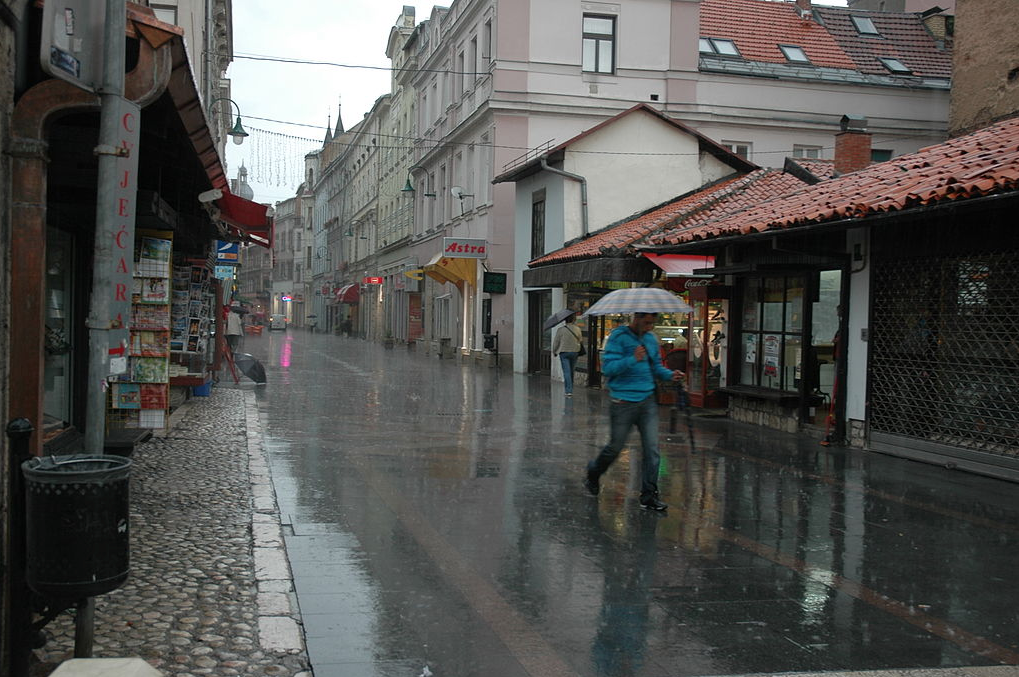Teach This Poem is a weekly series featuring a poem from our online poetry collection, accompanied by interdisciplinary resources and activities designed to help K-12 teachers quickly and easily bring poetry into the classroom.
Featured Poem
Rain in Ferhadija Street

By Jason Rogers. This image is in the public domain.
Classroom Activities
- Warm-up: Ask your students if they can they think of a time when someone has helped or carried them through something difficult. Can they think of a time when they have carried someone else? Ask them to quickly write down these thoughts.
- Show your students the photograph of the man crossing the street in a heavy rain. Ask them to look carefully at this photo and make a list of all the sensory details the man might be experiencing, including sights, smells, and sounds. Ask them to write down how these sensory details might change if the man were carrying a child in the rain.
- Ask your students to gather in small groups to create a two- or three-minute silent skit about crossing the street in a heavy rain carrying a small child. They should be sure to represent how the person crossing the street with the child feels. They have five minutes to plan and rehearse.
- Ask each group to present their skit to the rest of the class. (They should not be graded for how well it is performed.) Ask the students who are watching to name details they notice in the skits that tell what is happening and how the person feels.
- Project the poem “Shoulders” in front of the class. Ask your students to read it silently and write down the words and phrases that jump out at them. Play the audio of Naomi Shihab Nye reading her poem and ask your students to write down anything new that they hear. Play the audio a second time, following the same process.
- Ask your students to get back in their small groups and share the details in the poem that tell us the story, or narrative, of the man crossing the street. Why do they think these details were chosen by the poet?
- Whole-class discussion: Why do your students think the poem might be titled “Shoulders?” What do your students think the speaker in the poem is saying we need to do “to live in this world”?
